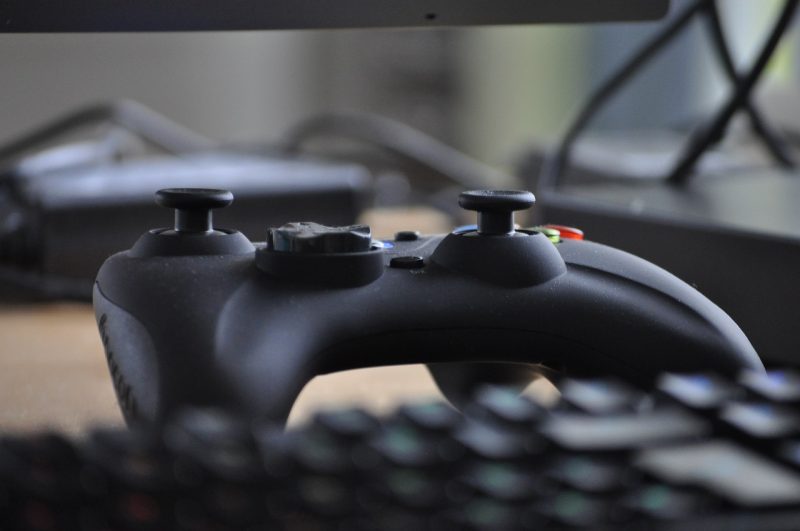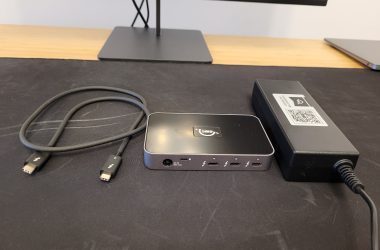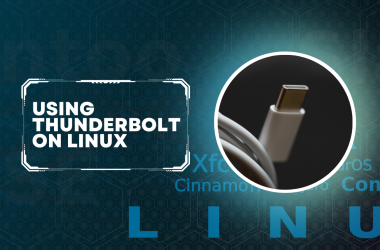Typically, users think of monitors as a component primarily for PCs, while console users may think of TVs as more suited for gaming.
The fact of the matter is that while most still prefer TVs, some console gamers prefer a monitor to game on instead of a TV. A solid monitor is a must-have component if you’re a PC user who also partakes in console gaming.
The tradition of console gamers preferring TV sets has started changing even more with the launch of the latest generation of consoles like the Sony PlayStation 5 and Microsoft Xbox Series X and S.
The trend of using gaming monitors for consoles has caught traction as newer consoles come with many advanced features that only monitors can handle. The best part is that these monitors are also compatible with last-generation consoles, making them a superb investment.
With monitors marching into the foray, console gaming, limited to sitting away from TV sets, has become a more pleasurable experience, with gamers now able to sit much closer to the screen for an immersive experience.
However, not every high-end monitor that’s a good fit for PC gaming is necessarily a great fit for consoles.
In this article, we’ll take a thorough look at the factors to consider while buying a monitor for console gaming and try to give you some detailed info on the matter. Hopefully, you’ll be well-equipped with the necessary information to make the best choice for your specific needs.
If you’ve got any feedback, questions, or critiques, please let us know in the comments.
Table of Contents
Why Do I Even Need a Monitor?
Today’s consoles have far more processing power in their miniature housing. Earlier consoles like the PS4 used Accelerated Processing Units (APU), where the CPU, GPU, and memory controllers were on the same die. These APUs could offer a maximum 60Hz (the average frame rate of a TV set) frame rate.
However, manufacturers have opted for separate CPU and GPU units in the current generation of consoles.
Now they offer much faster processing, better detailing, lower lag, and frame rate in games.
The limitation of a TV set stands exposed as they are not built to handle these parameters, and thus the need to switch to gaming monitors is a good option if you want to experience the games to the fullest.
Let’s take the PlayStation 5, for example. The PS5 has an eight-core, custom-made AMD CPU chip based on third-generation Ryzen microarchitecture. It runs on 3.5 GHz speed and is a beast of a processor that supports ray tracing. Sony has packed the console with a formidable GPU setup with 10.28 TFLOPs and 36 CUs that run at 2.23GHz speed.
The GPU now supports up to 8K resolution and ray tracing in many PS5 games. Ray tracing technology greatly impacts in-game visual fidelity by mimicking light movement as it bounces from object to object. Ray tracing allows the games to create realistic lighting and shadow effects. PS5 architect Mark Cerny also vouches for audio enhancements for gamers owing to ray tracing support.
Panel Technology
Now that we’ve laid out why you should give some serious thought to the TV vs. Monitor matter let’s look at the popular panels that monitors come with.
There are mainly three variations in monitor panels; each has its pros and cons. The choice would depend on your requirement. In the market, there are few variations, but they are more subtypes of these three main types.
1. Monitors with IPS Panels
Monitors with IPS or In-Plane-Switching technology are the best for viewing angles and color reproduction. The visual experience is the best in these monitors as the panel has excellent color coverage and wide contrast ratios that allow for a vast color spectrum. Gaming on monitors with IPS panels is a beauty due to its consistent and vibrant colors.
The issue, however, lies with their low response time. Although it is not universal, and there are plenty of IPS panels with high response times, they may be costly. A regular IPS monitor usually suffers from blur and ghosting issues due to its high response time.
Another issue IPS monitors are plagued by is a glowing effect at the monitor’s corners called IPS Glow.
2. Vertically Aligned Panels
VA panels are an excellent choice for gamers looking to balance color quality and response time. They are moderately priced and offer great value for money. The contrast ratios are exceptionally high in VA panels and offer the broadest color spectrum. This means that there are more shades of the same color, and one shade is distinctly distinguished from the other shades consistently. The Samsung Odyssey G9, for example, offers a VA panel in its massive 49-inch display.
A super-fast VA panel would set you back by around $800 (at the time of writing, Aug 2021).
VA panels are sweet spots for casual gamers, but they are also prone to ghosting and motion blur, and unless the monitor comes with an overdrive function, competitive console gamers should stay away from them.
3. Twisted Nematic Panels
These are the most preferred panels by competitive gamers and hated by casual gamers who are in for an extensive visual experience in their games.
TN panels are the cheapest and offer an excellent frame rate and response time. These panels have negligible motion blur or ghosting, and they are ideal for fast-paced games like racing titles and FPS games.
TN panels are, however, plagued with low color spectrum issues, and there is a lack of vividity. The colors are nothing to be excited about, and they get worse when the viewing angle changes. With TN panels, you cannot expect your friend to enjoy your gameplay from an angle, as all he would see are greyed-out silhouettes of the characters moving around. Again, we can’t stress that many TN panels can go toe to toe with some IPS or VA panels in terms of color accuracy, but they are sure to cost you more than regular TN panel monitors.
With the panel sorted, it’s time to look at the other factors that make a good monitor for consoles.
Screen Size and Resolution
There are ample resolutions to game on, and the best starting point, we believe is 1080p. With monitors, pixel density matters a lot as you would be sitting just a few steps away from your monitor, and hence the gaming resolution should strike the right balance with the size of the display.
A 25-27-inch monitor would be best for Full HD gaming. Any higher you would have the pixels stretched or less densely packed, affecting the clarity of anything you watch on the screen. The balance between gaming resolution and monitor size would also let the monitor maintain its refresh rate, and you would be less likely to see drops in frames.
However, with current-generation controls wholeheartedly supporting 4K gameplay, you can go for more giant 32–34-inch monitors. The size-to-resolution ratio would give the display excellent pixel density, allowing you to enjoy 4K gameplay at its best.
Viewing distance is a factor that must be considered when speaking of pixel density. Unlike TVs, monitors are built for up-close, and personal usage and resolution become essential.
In the case of more extensive displays such as a big TV, the view distance is considerably far from the display. At those distances, the benefits of UHD resolution are quite minimal as most people would have trouble spotting the difference between 1080p and 1440p. By comparison, since the monitor would be just a few inches away from you, the difference would be acutely noticeable.
A deal breaker could be the lack of official support for 1440p in PS5.Whether a future update would enable it is an area for debate, but with Xbox Series, X/S offering support for 1440p gaming, choosing the monitor’s resolution would depend on your console. Given the current scenario, investing in a 4K monitor might be better.
Refresh Rate and Response Time
With the current generation of consoles taking a giant leap in quality and offering more frame rates in some supported games, and that too at a high resolution, getting a monitor with at least a 120Hz response rate is essential if you want to take advantage of this massive upgrade.
As with seasoned gamers, you may prefer monitors with low resolution and higher frame rates. With an increase in resolution, the monitor’s refresh rate drops as they become incapable of displaying more than 60-75 frames per second on a QHD or UHD resolution.
Even some discrete graphics units cannot process a high number of frames at high resolution, but the PS5 comes with the latest HDMI 2.1 that supports a 120Hz refresh rate, and that too on a 4K or UHD resolution.
Hence you would need a monitor that can handle these many frames at 4K resolution.
You might have to break the bank for a TV with a 120Hz or more refresh rate.
A refresh rate to resolution parameter must be considered while buying monitors for consoles, as not all resolutions support a particular refresh rate. While consoles may support 120Hz refresh rate on Full HD, QHD, and 4K resolutions, monitors may drop support for 120Hz at QHD resolution and continue supporting it on Full HD and 4K.
Hence calculating well in advance and checking the specification thoroughly from the monitor manufacturer’s website is highly recommended. We recommend downloading the product manual and going through it a couple of times, at the very least.
The Xbox Series X/S also has support for AMD FreeSync. Hence your monitor should have a Variable Refresh Rate (VRR) technology embedded, which would allow FreeSync to control the refresh rate of the monitor and prevent screen tearing or choppy gameplay by striking a balance between the refresh and frame rates.
As with response time, console gamers would be blown away with almost any monitor that offers less than ten milliseconds as that is still very low compared to TVs, where the response time is hardly specified.
For a good gaming experience, response time is essential as the response time determines how fast the pixels in the display switch colors from one shade to another. The lower it is, the faster the button is, and lower the chances of ghosting.
Most monitor manufacturers quote response time based on best-case scenarios.
A switch between the shades of the same color is much faster than switching between two entirely different colors. In addition to pixel response time, some manufacturers arm the monitors with Backlight Strobing Technology, giving users CRT-like clarity in motion pictures. Manufacturers like Asus use the Extreme Low Motion Blur (ELMB) moniker to provide close to 1ms response time and cut-out motion blur.
Unless you are a seasoned gamer, you may not be able to spot the minimal difference between 1ms and 7-8ms response time.
When gaming at a low refresh rate, if response time is low at 10ms, it should still be enough for excellent gameplay with considerably less motion blur than TVs. You could consider going in single digits if you plan to game at 4K/120Hz.
Our experience playing DOTA 2 on a 32-inch Full HD TV was extremely far from ideal as I could see trails behind some fast characters like Storm Spirit and Slark. Ghosting has low acceptability margins; hence, Trailing almost made the game unplayable.
Screen Curvature and Aspect Ratio
Curved displays are trending now, with both TV and Monitor manufacturers jumping in on the bandwagon and coughing up some high-quality curved displays. Some resolution and aspect ratio restrictions help narrow your search results for consoles.
Even though it is a personal preference, we recommend a flat-screen monitor with a regular and familiar 16:9 aspect ratio for console gaming. Curved screen monitors with a 21:9 aspect ratio may look very attractive, but their custom resolutions of 2560 x 1080 or 3440 x 1440 that make them Ultra-Wide aren’t supported on consoles yet.
The games are also designed to run on regular Full HD, 1440p, or 4K resolution rather than widescreen resolutions. However, if curved monitors are something you want, you should look for one that uses a more standard and mainstream resolution, like 2560 x 1440. You won’t have an ultra-wide look and no issues with unsupported resolutions.
Moreover, most games on consoles are designed to run on the popular and widely accepted 16:9 aspect ratio. We again find a matter of preference here as the latest Xbox supports WQHD (‘1440p’ – 2560 x 1440) output, but that is missing from PS5.
Hence, you can opt for a WQHD monitor with wide screens if you own the newest Xbox.
HDR and Color Depth
When considering monitors for console gaming, HDR performance should never be overlooked. Except for the Nintendo Switch, every console supports a mature high dynamic range. So irrespective of the brand you go for, your monitor should have good HDR support. By good, I mean VESA-certified HDR. These are monitors that support HDR400 and above. HDR also ensures the monitor is adequately bright for daytime gaming.
Most console games now come with HDR enabled, which makes a noticeable difference in gaming.
HDR-supported panels offer improved color definition with vivid and lively colors. The contrast in these monitors is better utilized, giving every scene more depth. The color spectrum of HDR-enabled monitors is broad, and they realistically display different color tones. In simple terms, the dark and light areas appear more distinct, and this is particularly helpful in games where the backdrop is on the darker side.
A good example would be some Splinter Cell games.
The color depth is a parameter that goes overlooked by a lot of gamers. It’s best to go for monitors with 10-bit color depth even if the panel itself is 8-bit, as the 10-bit the monitor obtains through upscaling is still indistinguishable from a native 10-bit panel, which by the way, are too rare and expensive.
HDR is of no use unless optimized correctly, and every manufacturer uses their proprietary technology to optimize HDR with color depth.
It would be worth considering the versatility of consoles while choosing monitors, as they double up to be great entertainment boxes. Streaming video platforms like Amazon Prime, Netflix, Apple TV, Roku, or Disney Plus serve HDR-enabled content. So if you opt for a monitor with inadequate or unoptimized HDR performance, you would be losing a lot from the content of these platforms. A good monitor can be a good TV, but the same cannot be said for TVs.
Connectivity Features
You should be wary when considering connectivity for monitors that you intend to use with Xbox Series X/S or PS5. Typically a monitor from a reputed manufacturer would have enough HDMI and Display Ports, but it’s their version that you should keep an eye out for.
The most popular monitor inputs are HDMI and DisplayPort. HDMI is probably the most widely used port nowadays, found in almost every device that has something to do with the display.
In addition to these ports, you would do well with some USB 3.0 downstream and upstream ports as that would give the monitor excellent capabilities to be used on a standalone mode.
Also, if the monitor comes with a Thunderbolt 3 or 4 port, that would be great. An all-around monitor would also have audio output ports through which you can connect headphones for discreet gaming. An abundance of connectivity ports would allow the monitor to be used for various purposes like connecting a desktop, a laptop, or even using it as a TV.
Overdrive Settings
With most features sorted, let us take a look at the Overdrive capabilities your monitor would do good to have.
Overdrive features are found in most high-end monitors from reputed brands, and they offer excellent tweaking features to improve the gameplay further. The visibility can be boosted to some extent through Overdrive settings, and they assist gamers with a few degrees of improved gameplay.
Overdrive features are available from the On-Display-Settings menu of the display. In addition to offering regular brightness, color, or sharpness tweaks, allow users to improve screen response time through appropriate settings or enable and disable enhancements like Black or Darkness Stabilizer, improving the display of different shades of black. Different manufacturers offer similar features under different names like Night Boost, Shadow Boost, or Darkness Control.
Issues While Setting Up the Display
Connecting the monitor to your console should be pretty straightforward, and you should make sure you use high-performance cables that support the resolution and frame rate that you’re planning to game on.
When plugging in cables, you should ensure they are in the correct ports of both the console and the monitor. The last thing you would want is running to file an RMA with Sony or Microsoft, complaining that the consoles cannot do 4K at 120Hz and later finding that you were connected to the monitor via an incompatible port.
Supposedly you have hooked up a high refresh rate monitor to your Xbox Series X/S, and you find yourself being limited to 60Ghz even if your monitor supports 120Hz via HDMI 2.1. Here is a short guide on how to enable the 120Hz refresh rate. However, there are chances that FreeSync would be disabled.
- Go to Profile & System(tab on the far right).
- Choose Settings, then General and TV & Display Options.
- You would find an option called Video Fidelity & Overscan.
- Press on the Connection drop-down, and if you find Auto-detect (Recommended) is selected, then change it to HDMI.
- Now go back to TV & Display Options. The 120Hz refresh rate should be selectable now.
If you face this issue in a PS5, there is a Performance Mode you would need to switch to enable a 120Hz refresh rate.
- Go to Settings by clicking the cog icon at the top right of the main menu.
- Choose Saved Data and Game/App Settings and Game Presets.
- Change Performance Mode or Resolution Mode to Performance Mode.
- The 120Hz refresh rate should now be enabled on titles that support it.
However, if you prefer image quality over higher frame rates in certain games, remember to change the mode back to Resolution Mode.
Conclusion
Picking up a monitor for your console could be a tricky affair as most gaming monitors with extremely high refresh rates are right now just overkill for consoles. While the PC gaming industry has thrived thanks to manufacturers pumping out monitors with refresh rates as high as 300Hz, consoles still have a long way to go before they can reach those numbers. The latest generation of consoles has taken a big step towards combining high frame rates and resolution.
Monitors are not something you would want to invest in whenever Sony or Microsoft rolls out a new console, and hence, thinking long term would surely help. A host of monitors can do 144Hz on high resolutions, and getting one of them could have you somewhat future-ready for any possible upgrades that the next generation of consoles would bring in. The ideal monitor would be the one to have a perfect combination of all the essential features and not go high on just one or two parameters.
Monitors for Console Gaming FAQ
Is a 120Hz monitor enough for console gaming?
Most see monitors as a one-time investment, and with every one-time investment, it is better to think ahead. Right now, the highest refresh rate supported by consoles is 120Hz. However, they support even higher refresh rates if enabled by the manufacturers through OTA (Over-the-air) updates. As such, it’s recommended to go for a monitor with at least a 144Hz refresh rate.
Why has color depth been included as an essential factor?
Color depth is the variety of colors a monitor can display. There are three primary colors, namely red, green, and blue, and an 8-bit panel can display 256 shades of each color which, when multiplied, comes to 16.7 million colors. A 10-bit panel, on the other hand, has a more extensive color palette, and it can display 1024 shades of color and hence a humongous 1.07 billion colors. The more depth a monitor has, the more colors it can display, bringing the visuals closer to being life-like.
I am happy gaming on my TV; what more could a monitor offer me?
TVs are designed for general entertainment. Gaming on TV sets looks nice and vibrant. However, there is more to gaming than just good colors. There are many light and shadow effects that a TV panel cannot reproduce, as these effects need dedicated hardware modules that are usually absent in TVs.
Can I connect my console to any gaming monitor?
Physically it is possible to hook up consoles with any gaming monitor, but gaming monitors do not come cheap, and getting a top-of-the-line monitor without checking the specs would not be of much help. There are a lot of differences in the games meant for PC and consoles, as PCs allow a massive headroom for adjustments to the resolution and aspect ratio, which a console does not. Hence, getting the perfect monitor that matches the specs of the console is extremely important.
Can I increase the refresh rate and response time of my TV?
Television sets come with a pre-configured refresh rate with extremely little headroom for adjustments. Few TVs allow users to change the refresh rate, but the range is within 10-20Hz. The impact of this change on the gameplay is extremely minimal and hardly noticeable. This generosity, however, is totally absent with response time. TVs generally have a high response time, and I have never seen a TV until now that comes with options to make any changes.





